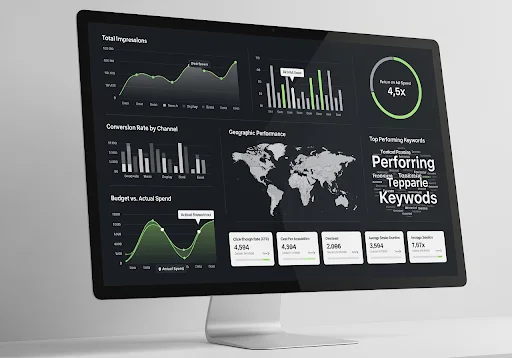The Future of Land Management: Trends and Tools Shaping the Industry

Land management is an essential facet of modern civilization, encompassing the responsible use and development of land resources. In recent years, it has undergone a significant transformation driven by emerging trends and innovative tools. This blog explores the latest trends and tools that are shaping the future of land management, highlighting the importance of land management software in this evolution.
Trends Reshaping Land Management
Sustainable Development Practices
The 21st century has seen a profound shift in the way we approach land management. Sustainability is no longer an option but a necessity, and this trend is significantly impacting land use practices. Sustainable development involves minimizing the environmental impact while maximizing economic and social benefits. For example, brownfield redevelopment initiatives are breathing new life into underutilized urban areas, reducing the need for sprawling developments.
Land management software plays a vital role in this trend by enabling precise planning and assessment of sustainability metrics, such as carbon footprint and resource consumption. It helps land developers make informed decisions that contribute to a healthier environment.
Urbanization and Smart Cities
Urbanization is another driving force behind the evolution of land management. As more people migrate to cities, land becomes a precious and finite resource. The concept of “smart cities” aims to optimize urban spaces, making them more efficient and sustainable. This involves integrated technology solutions for transportation, energy, waste management, and more.
Land management software empowers urban planners by providing geospatial data, enabling them to make data-driven decisions about zoning, infrastructure, and green spaces. This results in more efficient urban development and improved quality of life for city residents.
Data-Driven Decision-Making
In the digital age, data is king. Land management is no exception. Data-driven decision-making has emerged as a crucial trend, allowing stakeholders to make informed choices based on accurate information. This trend revolutionizes land management by providing a scientific and objective approach to decision-making.
Land management software play a vital role in collecting, analyzing, and visualizing data related to land use. This information helps land managers optimize land use, improve resource allocation, and enhance overall efficiency.
Tools Revolutionizing Land Management
GIS Software
Geographic Information Systems (GIS) software is a powerful tool in the realm of land management. It enables users to collect, store, analyze, and visualize geographical data. This technology is essential for land managers and developers as it allows them to map land parcels, assess environmental factors, and plan infrastructure projects accurately.
Land management software often includes GIS functionality, providing comprehensive data management and analysis capabilities. It allows professionals to perform tasks such as site suitability analysis, land valuation, and natural resource management with ease.
Land Development Software
Land development software is tailor-made for the land development industry. It streamlines the planning, design, and construction processes, making them more efficient and cost-effective. Such software is invaluable for architects, engineers, and land developers who need to coordinate various aspects of a development project.
Land development software simplifies land planning, zoning, and permitting, allowing for smoother project execution. Its comprehensive features help streamline the entire development process, from conceptualization to completion.
Land Management Applications
Land management applications, particularly mobile apps, have gained popularity for their convenience and utility. These apps are designed to assist land managers, environmentalists, and real estate professionals in various aspects of their work. For example, field inspectors can use mobile apps to gather data, while real estate agents can access property information on the go.
Land management software includes mobile applications that are user-friendly and compatible with various devices. This allows professionals to access data and perform tasks in the field, increasing efficiency and accuracy.
FAQs About Land Management Trends and Tools
-
What are the key challenges in land management today?
Land management today faces several significant challenges, including urban sprawl, resource depletion, and environmental degradation. Land management software help address these challenges by providing data-driven solutions for more sustainable land use practices.
-
How is technology changing the face of land development?
Technology is reshaping land development by introducing innovative tools such as GIS software and land development software. These tools simplify and expedite the planning, design, and construction processes, making them more efficient and cost-effective.
-
Can you provide examples of successful sustainable land management projects?
Successful sustainable land management projects are emerging worldwide. One notable example is the High Line in New York City, a park built on a disused railway line. It’s a remarkable demonstration of repurposing land for public and environmental benefit. Land management software played a pivotal role in planning and executing this project.
-
How can businesses and governments benefit from data-driven land management?
Data-driven land management enables businesses and governments to make informed decisions that maximize the efficient use of land resources. For businesses, this means cost savings and improved project outcomes. For governments, it results in better urban planning and resource allocation, leading to more sustainable and prosperous communities.
Conclusion
In conclusion, the future of land management is exciting, with sustainability, urbanization, and data-driven decision-making at the forefront. Land management software and land development software are pivotal in facilitating these trends and streamlining the management and development of land resources. By staying informed about these evolving trends and utilizing the latest tools, we can collectively contribute to a more sustainable and efficient future for land management.

A Friendly Guide To The Different Kinds Of Waste

What Foreign Companies Need to Know About Employee Benefits in Mexico

What is an MVP and Why Every Startup Needs One

Accelerating drug discovery through the DEL-ML-CS approach

AI in Marketing Is No Longer a Buzzword — It’s the Strategy

7 Red Flags to Avoid When Hiring Mobile App Developers

Unlocking Ad Success with Big Data Analytics

What Are the Easiest Ways to Copy and Paste Text Online








